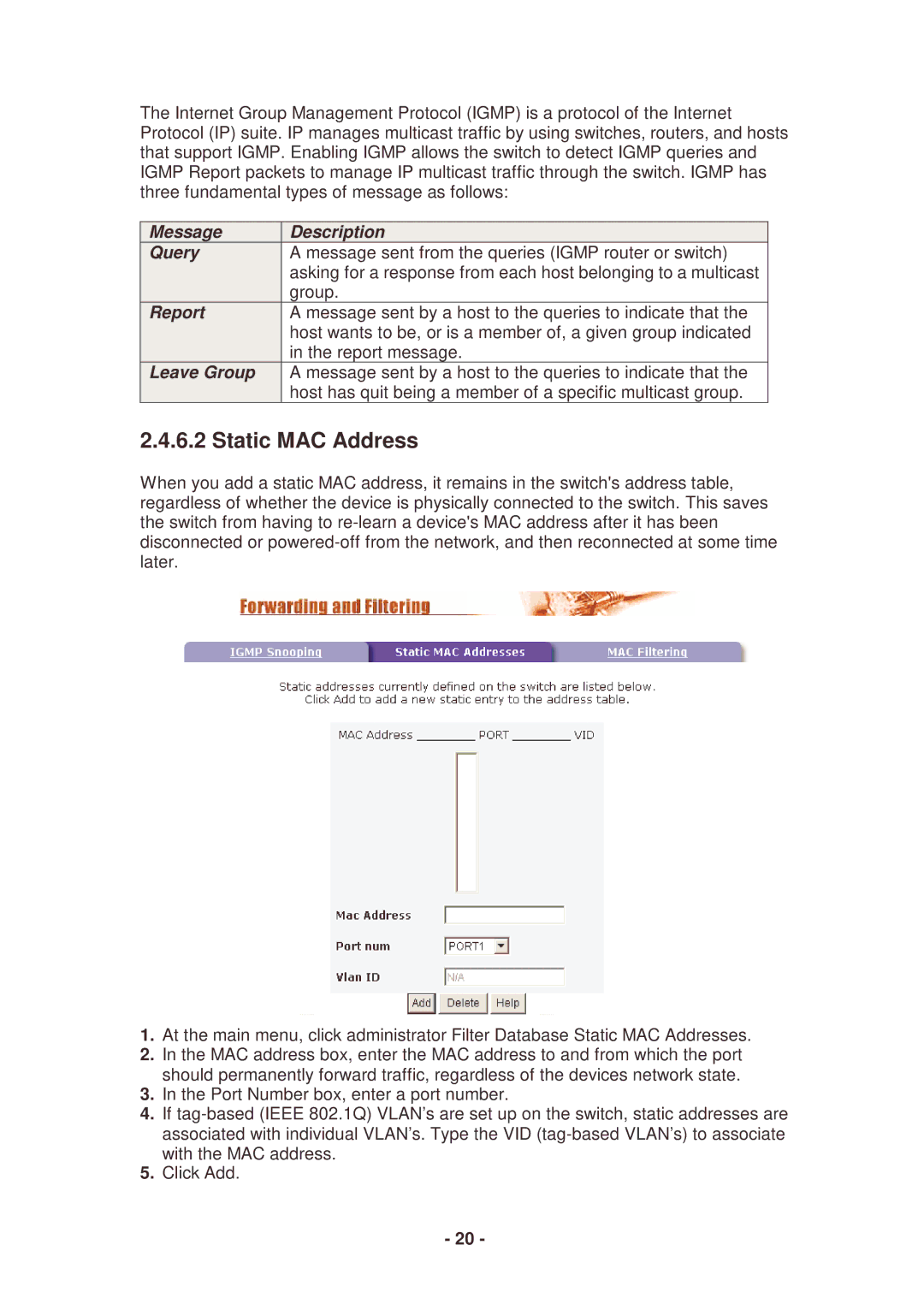
The Internet Group Management Protocol (IGMP) is a protocol of the Internet Protocol (IP) suite. IP manages multicast traffic by using switches, routers, and hosts that support IGMP. Enabling IGMP allows the switch to detect IGMP queries and IGMP Report packets to manage IP multicast traffic through the switch. IGMP has three fundamental types of message as follows:
Message | Description |
Query | A message sent from the queries (IGMP router or switch) |
| asking for a response from each host belonging to a multicast |
| group. |
Report | A message sent by a host to the queries to indicate that the |
| host wants to be, or is a member of, a given group indicated |
| in the report message. |
Leave Group | A message sent by a host to the queries to indicate that the |
| host has quit being a member of a specific multicast group. |
2.4.6.2 Static MAC Address
When you add a static MAC address, it remains in the switch's address table, regardless of whether the device is physically connected to the switch. This saves the switch from having to
1.At the main menu, click administrator Filter Database Static MAC Addresses.
2.In the MAC address box, enter the MAC address to and from which the port should permanently forward traffic, regardless of the devices network state.
3.In the Port Number box, enter a port number.
4.If
5.Click Add.
-20 -
